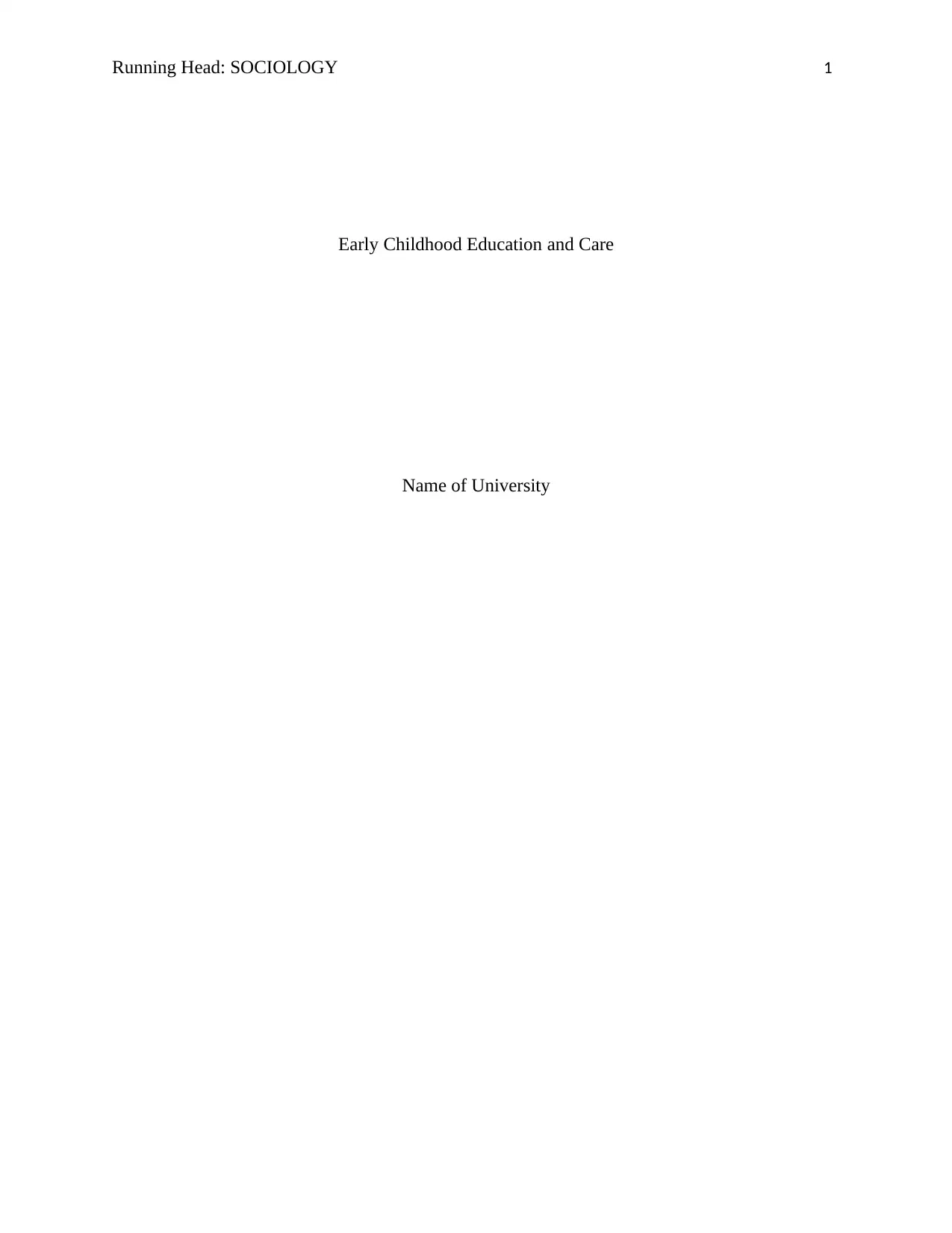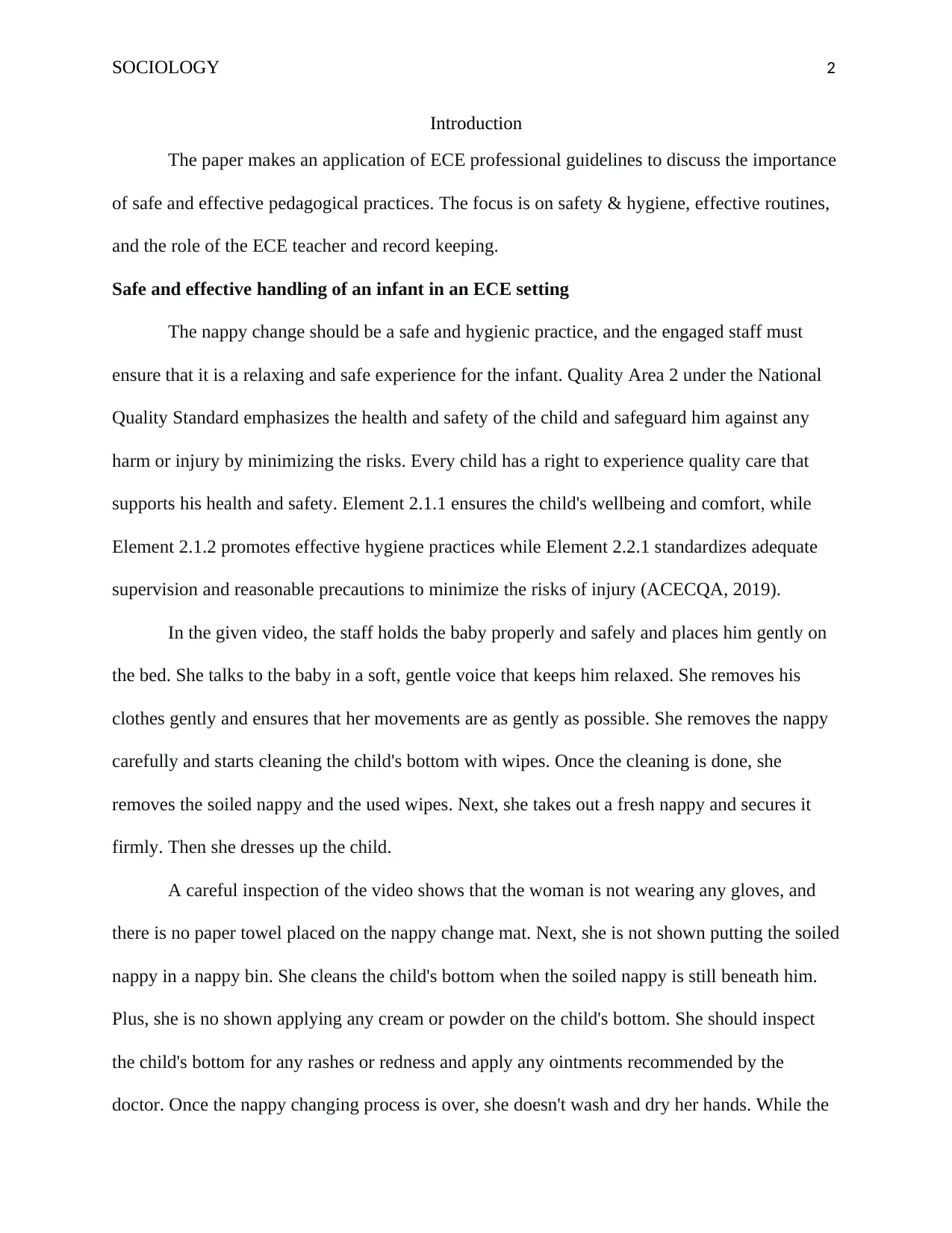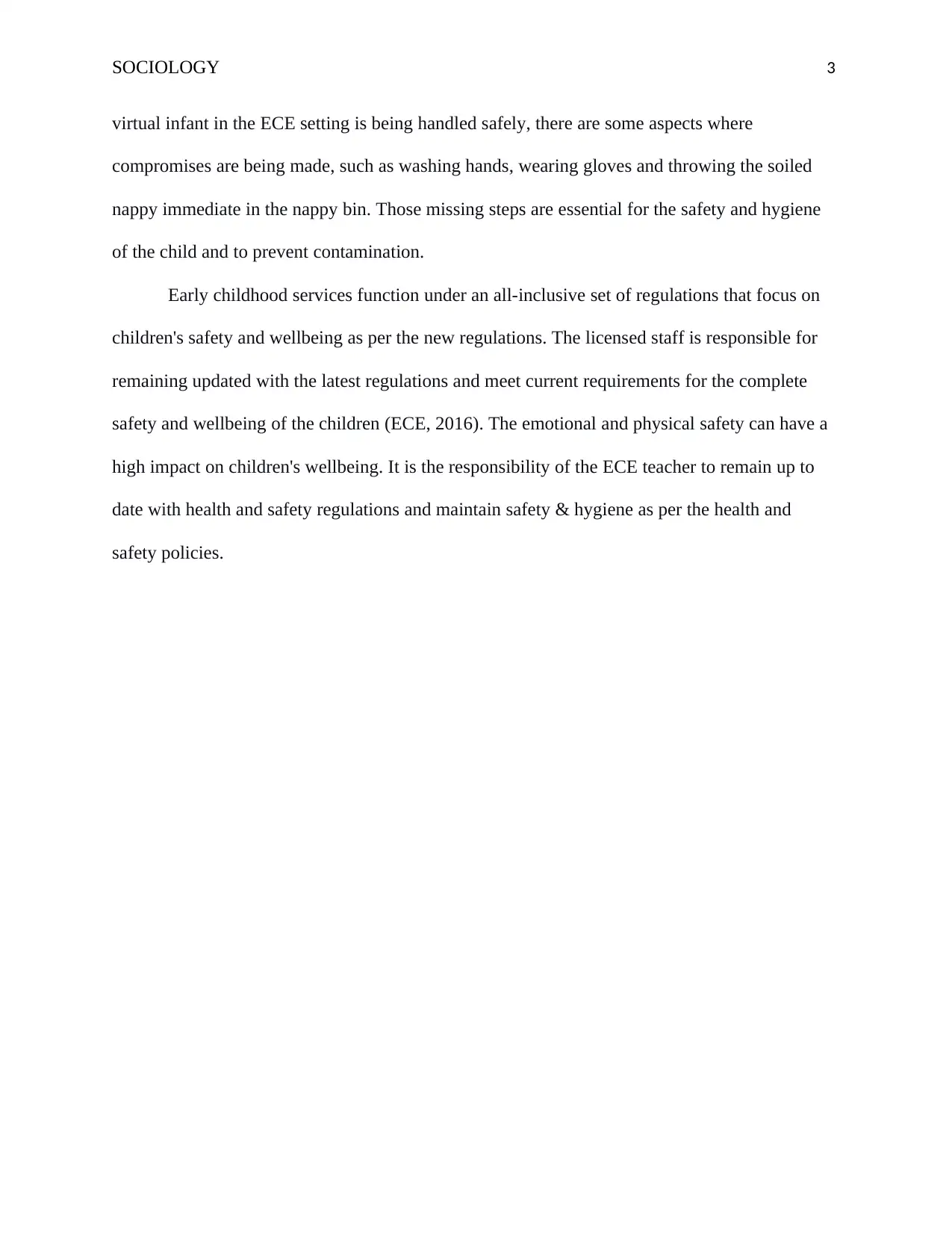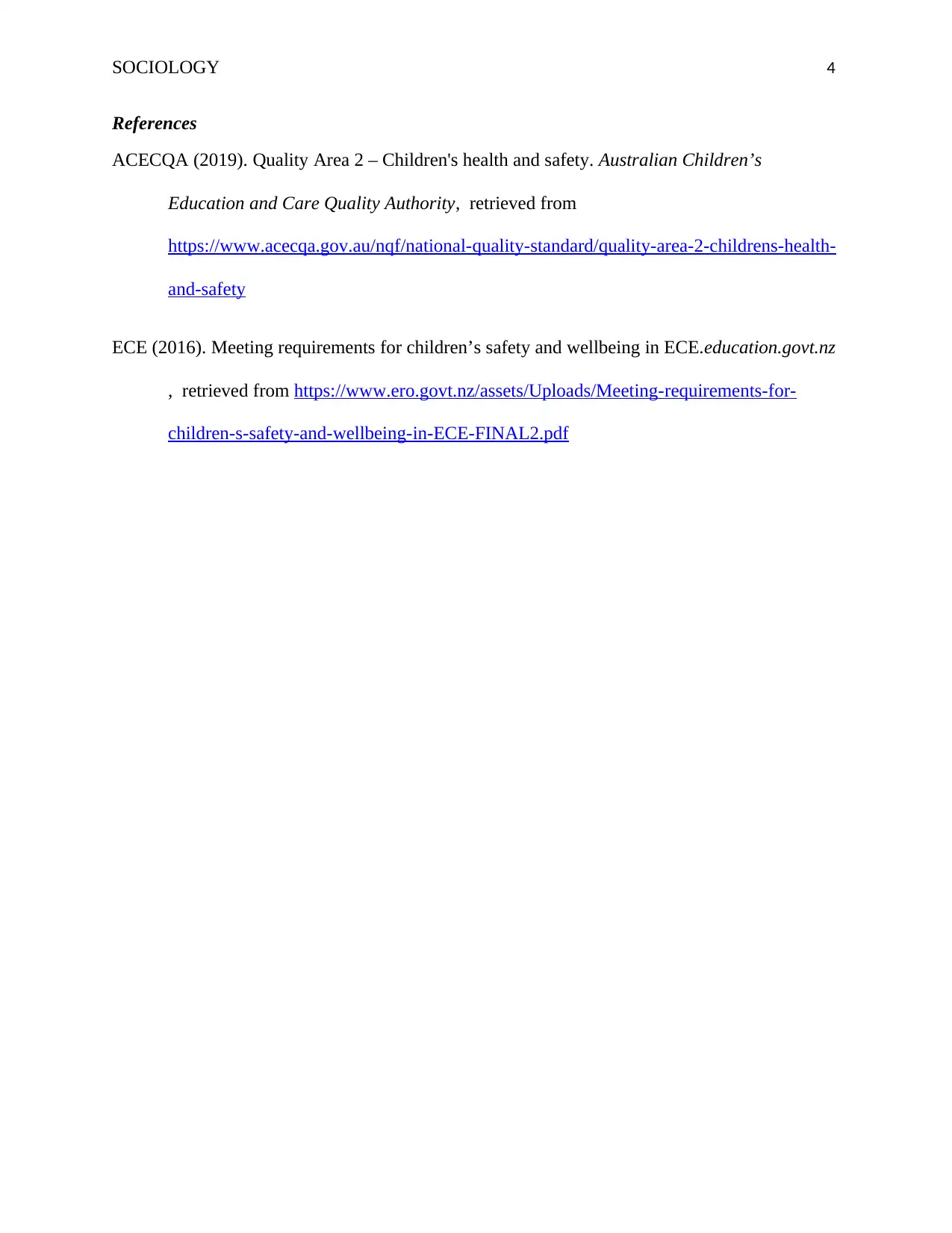Report: Safe and Effective Nappy Changing Practices in ECE
VerifiedAdded on 2022/07/27
|4
|604
|15
Report
AI Summary
This report analyzes nappy changing practices within an Early Childhood Education (ECE) setting, applying professional guidelines to ensure safe and effective pedagogical approaches. The core focus is on the importance of safety and hygiene during nappy changes, detailing effective routines and the crucial role of the ECE teacher in maintaining these standards. The report examines a video example, pointing out both correct and incorrect practices, such as proper handling of infants, cleaning procedures, and the importance of hygiene measures like handwashing and glove use. It references the National Quality Standard, emphasizing the need for health and safety, and highlights the significance of adhering to ECE regulations to safeguard children's wellbeing. The report also includes references to relevant resources such as the Australian Children's Education and Care Quality Authority (ACECQA) and ECE guidelines to support the discussed practices.
1 out of 4










![[object Object]](/_next/static/media/star-bottom.7253800d.svg)